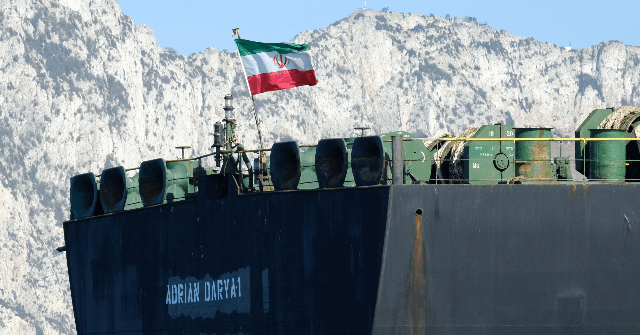Iran’s oil revenue decreased by more than $100 billion from 2018 to 2021, Iran’s oil minister said on Sunday.
Iranian Oil Minister Bijan Zanganeh stated in a report presented to Iran’s presidential office on June 20:
In addition to US sanctions and the special circumstances of the coronavirus pandemic, falling oil prices intensified the decline in government revenues, so that during the three years of economic war, the country’s oil revenues fell by more than one hundred billion dollars.
The administration of former U.S President Donald Trump in May 2018 withdrew the U.S. from the Joint Comprehensive Plan of Action (JCPOA), commonly known as the Iran nuclear deal. International parties established the JCPOA in 2015 to grant Tehran sanctions relief in an ostensible effort to deter the Islamic Republic from developing nuclear weapons. The deal stipulated that a U.N. Security Council arms embargo imposed on Iran in 2007 would expire on October 18, 2020. After quitting the JCPOA in May 2018, the U.S. tried unsuccessfully to extend the 2007 U.N. arms embargo on Iran in August 2020. The U.S. announced one month later that it would reimpose sanctions on Iran via a U.N. “snapback” process.
“Sanctions are being re-imposed on Iran pursuant to the snapback process under [a] UN Security Council resolution,” then-U.S. Secretary of State Mike Pompeo said in a press statement issued September 19, 2020.
The statement read:
On August 20, the United States notified the President of the [UN] Security Council of Iran’s significant non-performance of its JCPOA [Joint Comprehensive Plan of Action] commitments. This notification triggered the 30-day process leading to the snapback of previously terminated UN sanctions, which became effective … on September 19.
Shortly after Pompeo’s “snapback” sanctions announcement, Iran’s dollar exchange rate “set a new record high with a 2.5 percent increase to the rate of 273,000 [Iranian] rials per dollar,” Radio Farda reported on September 21, 2020. Iran’s U.S. dollar exchange rate was 160,000 rials on March 20, 2020, the start of the Iranian new year.
The Governor of the Central Bank of Iran (CBI) Abdol Nasser Hemmati claimed in mid-September 2020 that, in addition to “heavily supplying the NIMA (forex) market with hard currencies,” he had also authorized “petrochemicals, steels, and minerals firms to transact their export currency directly at the licensed exchange bureaus outside the CBI.”
The CBI established the NIMA exchange in 2018 as a centralized electronic system designed to “streamline foreign exchange purchases and sales among Iranian companies,” according to Radio Farda.
Economic analysts observing Iran’s financial markets in the fall of 2020 doubted the CBI’s ability to “heavily supply the market with the much-needed hard currencies. Supporting the analysts’ skepticism is the daily increase in price of various foreign currencies in Iran,” Breitbart News reported at the time.
The International Monetary Fund (IMF) predicted that Iran’s foreign exchange reserves would decrease by roughly $19 billion in 2020 to $85 billion and drop to $69 billion by 2021.
The U.S. government-funded Radio Farda reported in September 2020:
A significant part of Iran’s foreign exchange reserves is blocked abroad, and Iran can only use them to import authorized goods. This year, for the first time, Iran’s foreign trade balance has turned negative, and there appears to be no hope of improving the country’s foreign exchange reserves.
The IMF further predicted in 2020 that Iran’s total oil and related services exports would reach $46 billion by the end of the year and that its imports would exceed $64 billion. “Iran’s export numbers reached $100 billion prior to U.S. sanctions,” according to Breitbart News.





